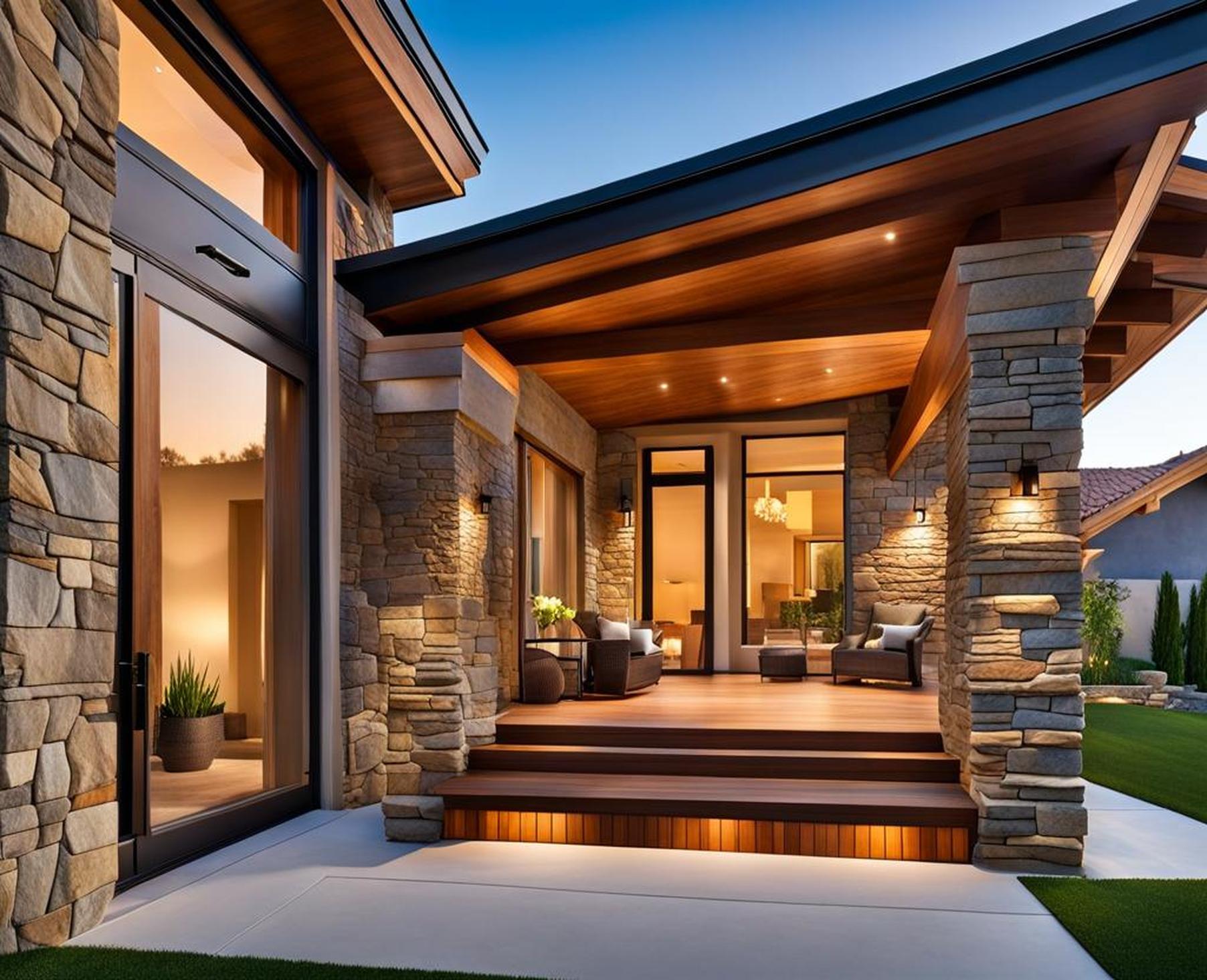When designing or renovating the exterior of a home, both visual appeal and structural integrity need to be considered. The stone materials used on external walls, landscapes, driveways and other visible structures serve the dual purpose of enhancing curb appeal while providing robust support against the elements. By understanding the unique properties of natural, engineered and composite stones, homeowners can make informed choices that balance aesthetics and functionality for their exterior spaces.
An Overview of Exterior Home Stones
Exterior home stones refer to the various stone materials used for external structures and finishes. From granite and limestone , to quartzite and flint , stones offer versatility in colors, textures, and looks. Natural stones are sourced directly from quarries and stone mines, while engineered stones combine minerals and resins to replicate natural patterns.
When evaluating exterior home stones, both capability and beauty need deliberation. Factors like strength, porosity, maintenance needs, style match and cost play a role. The choices ultimately depend on priorities like architectural plans, regional climate and budgets. With numerous stone varieties having unique visual and physical attributes, creative mixes make for stunning exteriors.
The Extreme Durability of Natural Stones
For exterior structures needing to withstand decades of exposure to the elements, natural stones present an ultra-durable material choice:
Granite
Granite earns its reputation as “the strongest stone” from exceptional hardness and density. Primarily composed of quartz and feldspar minerals, granite’s durability exceeds that of other natural stones. Extreme resistance to abrasion and corrosion makes granite ideal for hot, wet climates as well as freezing regions.

The polished face and smooth surface of granite requires little maintenance while retaining its luxurious glossy look. Granite stone cladding therefore provides both robust structural support and timeless curb appeal.
Quartzite
While comparatively unknown versus granite, quartzite matches and even exceeds the durability of its popular counterpart. As a metamorphic rock , quartzite is formed under intense heat and pressure that fuse quartz grains into an incredibly hard stone.
With a sparkly, colored composition, quartzite stone brings light and vibrance when used on exterior walls. It resists scratches, etching and stains – ensuring surfaces stay like new for decades. Exceptional strength also suits quartzite for flooring high-traffic exteriors.
Engineered Stones Merge Strength and Aesthetics
Homeowners desiring natural stone’s beauty without the drawbacks of sustainability, consistency or repairs find engineered stones ideal.
Characteristics
Engineered stones like quartz composites fuse minerals like quartz with polymer resins. The combination approximates the look and feel of natural stone slabs while overcoming flaws like fragility. Manufactured under controlled conditions, engineered stones exhibit reliable uniformity.
Benefits
The blend of organic and synthetic compounds in engineered stones gives exterior surfaces strength resembling natural offerings. The man-made nature also allows customization like glowing flecks that mimic rare stones. Consistent installation is easier sans natural stone’s risk of cracks or fissures.
For regions experiencing substantial freezing, engineered stones provide exceptional thermal resilience. The flexibility to mold intricate textures and etch surface patterns are added advantages.
Aesthetic Qualities of Different Exterior Stones
While structural stability remains vital, exterior home stones also define aesthetics and architectural styles. The colors, finishes and inherent traits of each variety set distinct decorative tones.
Sandstone
The beautifully fluid patterns and warm hues of sandstone infuse natural charm into exteriors. When used as accent walls or stacked stone finishes, sandstone’s organic ripples interplay intriguingly with greenery. The variations in its rustic texture shun homogeneity for depth. When bathed in sunlight, sandstone emanates a glowing, honey-kissed aura.
Limestone
Subtly elegant, limestone’s muted white and cream palette exude Mediterranean flair. Natural pits and fossil patterns add visual interest while limestone’s cooling attributes promote outdoor living areas. This makes limestone stone cladding highly suitable for courtyards, patios and poolside flooring.
Flint
With colors ranging from dark gray to mottled blue, flint stone introduces an artsy dimension to home exteriors. Its smooth yet uneven texture resembles the effect of broken shards fused together. When set against contrasting materials like wood or glass, flint stone cladding elicits amodern, abstract front.
How to Select Exterior Stones for Residential Plans
With varied offerings for exterior stones, narrowing choices requires strategic reflection:
Desired Architectural Style
Mediterranean villas, modern minimalist, English country cottage – the overall home design and ornamental vision should guide stone selection. Timeless marble cladding suits classical buildings while exotic basalt stone sharpens contemporary lines.
Climate Considerations
Factor in freezing winters, intense sun or heavy rainfall based on location. While granite may thrive in diverse settings, more porous stones like limestone need sealing when exposed excessively to water.
Creative Mixed Medleys
Blending natural quartzite and sandstone or polished marble with engineered quartz opens creative avenues. Textural patterns form alluring facades when varied stones interplay innovatively. It also optimizes their individual strengths across exterior surfaces.
Professional Guidance Adds Value
While personalization is key for exterior home stones, professional support ensures technicalities and costs are expertly managed:
Evaluate Overall Exterior
Masons conduct onsite analysis to identify areas needing stability improvements and water management. This allows appropriate stone matching as perpositional requirements.
Qualified Contractors
Specialized companies have extensive material knowledge for precision cutting, installation and positioning. Custom options for specialty stones can be explored cost-efficiently.
Experienced evaluation helps balance coveted natural stone aesthetics with functionality for exteriors. It streamlines selection aligned with architectural vision and regional realities.
Exterior home stones hold great significance for both structural engineering and decorative magnificence. Granite, limestone, sandstone and engineered quartz each offer unique textures, strengths and style. Evaluation of family needs, regional climate and the envisioned aesthetic allows smart blending of materials.
When natural stone and composite solutions interplay innovatively, exterior living spaces thrive as artistically inspiring and durably constructed. The prudent homeowner acknowledges how exterior stones merge structural support with enduring beauty.
Incorporating natural varieties like sandstone and flint alongside engineered durability of quartzite delivers the best of both worlds. With professional guidance, creative mixes balance surface functionality with textural harmony. Ultimately, strategically combining exterior home stones helps spaces withstand elemental fury while echoing environs through evocative rock-born elegance.
